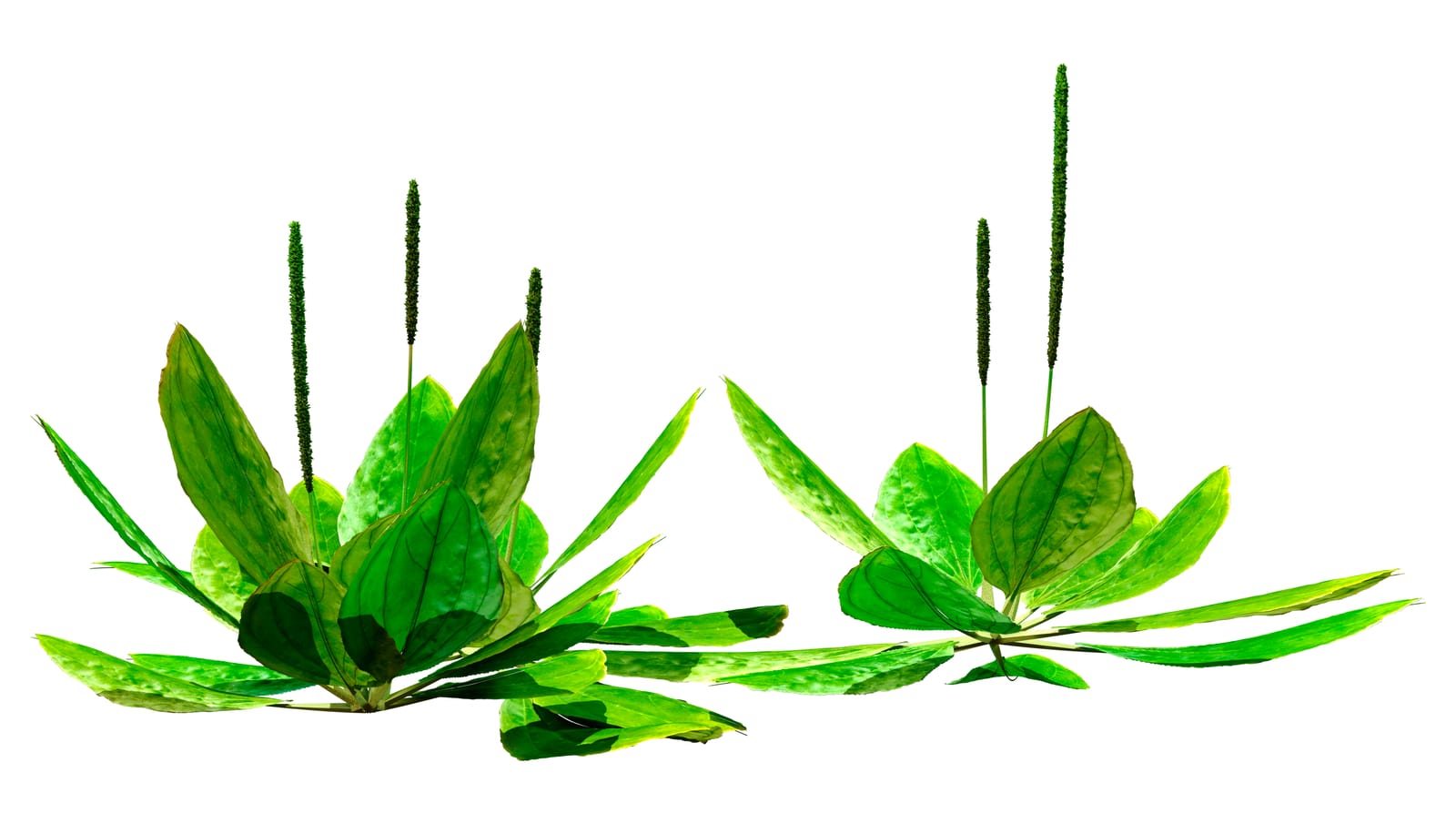*Health & Medical Disclaimer: I’m not a medical professional — just sharing what I’ve learned and love. Please use this information responsibly and check with your doctor or herbalist if you have any health concerns. Click here, to see a full version of this statement.
On a hike, I stopped dead in my tracks when I came upon a crazy sight. It was plaintain. But not just the ordinary weed in the garden plaintain. The plant in front of me came to my waist! I stood there for several minutes, staring confused at the giant plant. I tried to find explainations as to how this plaintain grew to such a size. I looked around where it was. A neighborhood not too far in the distance. It had to be fertilizers that came down to the hiking trail, in a run off from the rain. There was no other explanation.
But as I went home and eagerly searched to see if anyone else had seen a similar sized plaintain, I found out that such a size and genus/species existed. Giant plaintain.

Plantain weed (Plantago major and Plantago lanceolata) is a common backyard plant often mistaken for an ordinary weed—but it’s actually a powerhouse of healing properties. This humble green is known for its soothing effects on the skin, its natural anti-inflammatory qualities, and its versatility in herbal remedies such as teas, tinctures, and salves.
🌿 What Is Plantain Weed?
Plantain is a perennial herb native to Europe and Asia but now found all over the world. Its broad leaves (common plantain) or narrow, lance-like leaves (ribwort plantain) grow close to the ground. Herbalists have long valued it for its ability to draw out toxins, soothe irritations, and promote healing.
Plantain leaves contain compounds such as aucubin, allantoin, and tannins, which give it antibacterial and anti-inflammatory properties. These compounds make it useful for treating wounds, insect bites, burns, and even digestive discomfort when taken internally.


🍵 Internal Uses: Plantain Tea and Tincture
Plantain Tea
Plantain tea is a gentle herbal remedy that supports the respiratory and digestive systems. It’s often used for sore throats, coughs, or upset stomachs.
How to Make Plantain Tea:
- Add 1–2 teaspoons of dried plantain leaves to a cup of boiling water.
- Steep for 10 minutes and strain.
- Add honey or lemon for extra soothing effects.
👉 Try this easy recipe: Plantain Leaf Tea Recipe
Or you can buy an already made one here.
Plantain Tincture
A tincture is a concentrated extract made with alcohol or glycerin. Plantain tinctures are great for internal immune support and minor digestive issues.
Basic Tincture Instructions:
- Fill a glass jar with chopped fresh leaves.
- Cover with vodka or another 40% alcohol until submerged.
- Store in a cool, dark place for 4–6 weeks, shaking occasionally.
- Strain and store in a dropper bottle.
👉 Here’s a full guide: DIY Plantain Tincture
The alternative if you’re short on time, is to get an already made tincture from this link.
💧 Topical Uses: Plantain Salve for Skin Healing
Plantain is best known as a first-aid plant for skin irritations. A salve made from its leaves can help with:
- Bug bites and stings
- Rashes and eczema
- Minor burns or cuts
- Splinter removal (it helps “draw out” irritants)
I’ve made my own salve at home, and it’s so much fun to experiment with different scents and ingredients to create the perfect blend. A few holiday seasons ago, I made heart shaped salves and gave them out as gifts (shared the link to the mold). It felt good to share this homemade, healing salve with my loved ones.
How to Make Plantain Salve:
- Create a plantain-infused oil by soaking dried leaves in olive oil for 4–6 weeks (or gently warm for quicker results).
- Strain the oil and melt with beeswax (1 oz beeswax per 1 cup oil).
- Pour into tins or jars to cool.
👉 Full tutorial here: Homemade Plantain Salve Recipe
In case you’re super curious and want to give this a test run, plantain salve.

🌱 Harvesting Tips for Plantain Weed
- Where to find it: Plantain grows in lawns, trails, and disturbed soil—avoid areas sprayed with pesticides.
- When to harvest: Pick young, tender leaves in spring and early summer for food or medicinal use.
- How to harvest: Use clean scissors to snip leaves near the base. Wash gently and dry before storage.
- Drying: Spread leaves on a mesh screen in a shaded, well-ventilated area until crisp. Store in airtight containers away from sunlight.
🌼 Final Thoughts
Plantain weed is one of nature’s most accessible herbal allies. Whether brewed as a tea, preserved in tincture form, or applied as a healing salve, this unassuming plant offers countless ways to support your well-being. By learning how to harvest and prepare it yourself, you can turn a common “weed” into a trusted herbal remedy right from your backyard.


